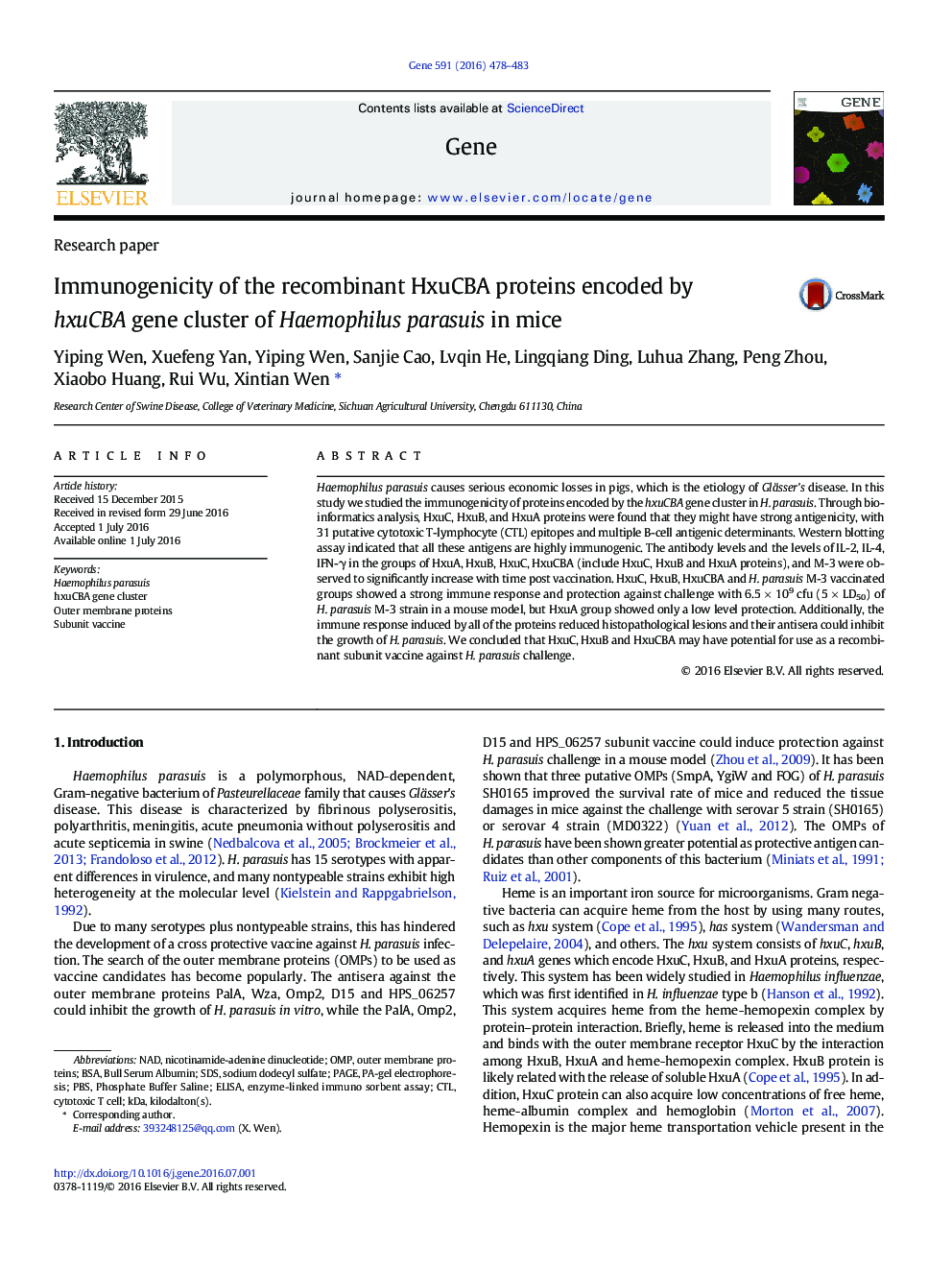| Article ID | Journal | Published Year | Pages | File Type |
|---|---|---|---|---|
| 2814799 | Gene | 2016 | 6 Pages |
•HxuC, B, A proteins were found to have strong antigenicity, with 31 putative cytotoxic T-lymphocyte epitopes and multiple B-cell antigenic determinants.•The antibody levels and the levels of IL-2, IL-4, IFN-γ against HxuA, B, C, HxuCBA, H. parasuis M-3 were observed to significantly increase with time post vaccination.•We concluded that HxuC, HxuB and HxuCBA may have potential for use as a recombinant subunit vaccine against H. parasuis challenge.
Haemophilus parasuis causes serious economic losses in pigs, which is the etiology of Glässer's disease. In this study we studied the immunogenicity of proteins encoded by the hxuCBA gene cluster in H. parasuis. Through bioinformatics analysis, HxuC, HxuB, and HxuA proteins were found that they might have strong antigenicity, with 31 putative cytotoxic T-lymphocyte (CTL) epitopes and multiple B-cell antigenic determinants. Western blotting assay indicated that all these antigens are highly immunogenic. The antibody levels and the levels of IL-2, IL-4, IFN-γ in the groups of HxuA, HxuB, HxuC, HxuCBA (include HxuC, HxuB and HxuA proteins), and M-3 were observed to significantly increase with time post vaccination. HxuC, HxuB, HxuCBA and H. parasuis M-3 vaccinated groups showed a strong immune response and protection against challenge with 6.5 × 109 cfu (5 × LD50) of H. parasuis M-3 strain in a mouse model, but HxuA group showed only a low level protection. Additionally, the immune response induced by all of the proteins reduced histopathological lesions and their antisera could inhibit the growth of H. parasuis. We concluded that HxuC, HxuB and HxuCBA may have potential for use as a recombinant subunit vaccine against H. parasuis challenge.
